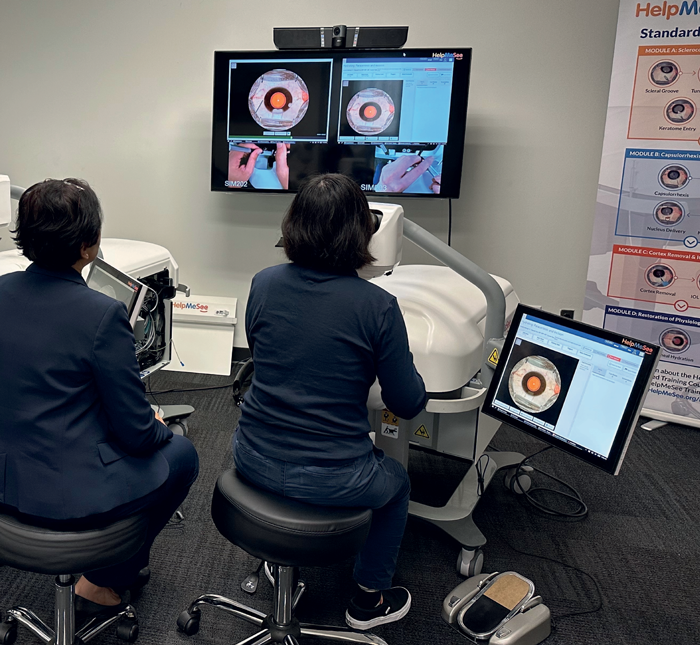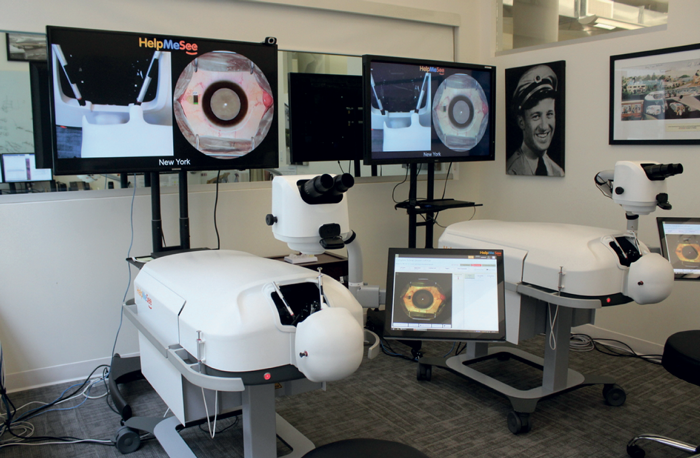
Phacoemulsification – the most commonly performed type of cataract surgery worldwide – is an essential technique in any future cataract surgeon’s armamentarium. HelpMeSee’s latest educational offering, the Eye Surgery Simulator Phacoemulsification Course, is a first-of-its-kind, full procedural virtual-reality (VR) training platform aimed specifically at teaching this popular technique. The five-day course comprises full procedural training – from making the initial clear corneal incision, performing a capsulorhexis and ultrasound emulsification of the nucleus, to insertion of the foldable intraocular lens, and eventual stabilization of the eye and wound hydration. These activities challenge trainees not only in their skill execution, but also in how they handle decision-making, time management, and any unexpected situations.
By using the state-of-the-art HelpMeSee Eye Surgery simulator, trainees are presented with a comprehensive view of the entire cataract surgery procedure, allowing them to understand how individual tasks fit into the broader context, while equipping them with the skills needed to perform the entire procedure with fluidity and confidence. The full procedural simulators are also equipped with advanced features, such as realistic anatomy, high-fidelity visual and haptic feedback based on live human tissue data, and various clinical scenarios, ensuring a highly immersive experience.
But the training offers much more than life-like visual and tactile realism; as trainees learn the order of operations and how to navigate seamlessly from one task to the next, an expert surgeon instructor remains on hand to facilitate their eventual transition into live surgery. The instructor also serves to accurately simulate the dynamics of a real-life operating room environment, aiding the trainee in learning how to communicate and work collaboratively with a full team. Emulating the efficacy already established in simulated aviation training – whereby prospective pilots have unlimited attempts to reach competency – trainees are then objectively assessed by the instructor for their readiness to transition into supervised live surgery.
As well as offering a scalable solution to the global shortage of qualified ophthalmic surgeons, this technology works to bridge the existing educational gap between training and live surgery, offering both medical students and already established surgeons an opportunity to practice their surgical skills in risk-free and educationally conducive surroundings – a virtual space where their real-life skills can be honed to perfection.

